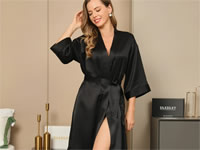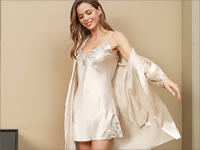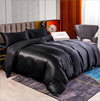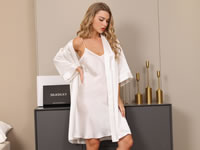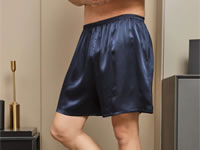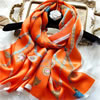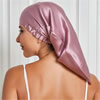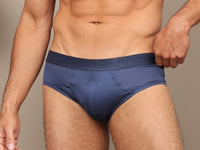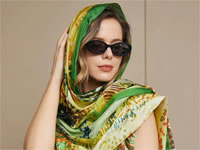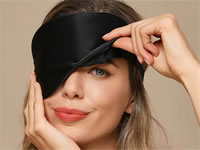Silk: Unveiling the Sustainable Elegance in Fashion
Share
Table of Contents
In the fast-paced world of fashion, a new trend is emerging - sustainable fashion. But why do we need to care about sustainability in the fashion industry? And how can we make more environmentally friendly choices when it comes to clothing?
In this blog post, we'll explore the importance and benefits of sustainable fashion, and provide practical tips for making eco-conscious choices in your wardrobe.
What Is Sustainable Fashion
Sustainable fashion is a concept that encompasses environmental, social, and economic impacts throughout the entire lifecycle of a garment. It involves adopting a circular economy model, promoting fair trade practices, and using environmentally friendly materials.
By embracing sustainable fashion, consumers can reduce their carbon footprint, support ethical working conditions, and contribute to a more equitable and sustainable future.

Why Do We Need To Care About Sustainable Fashion
The fashion industry has a significant negative impact on the environment and society. From carbon emissions and water pollution to labor injustices, the consequences of our consumption choices are far-reaching. Fast fashion, which prioritizes speed and low cost over quality and ethics, exacerbates these issues.
By reflecting on the fast fashion model and embracing sustainable alternatives, we can create a more positive impact on both the planet and people.
Benefits Of Sustainable Fashion
Research and case studies have shown that sustainable fashion can have a positive impact on the environment and society. Consumers are becoming increasingly aware of the brand image and reputation associated with eco-friendly practices, leading to a growing demand for sustainable options. Additionally, sustainable fashion can promote creativity, innovation, and long-term value, rather than disposability and constant consumption.
How To Choose Sustainable Fashion
When shopping for clothing, consider choosing items made from eco-friendly materials such as organic cotton, recycled fibers, or even unexpected fabrics like silk. Support brands that prioritize fair trade practices, ensuring fair wages and safe working conditions for all involved in the production process. Look for durable and timeless pieces that can be worn for years, reducing the need for frequent replacements.
Some well-known sustainable fashion brands include Patagonia, Stella McCartney, and Eileen Fisher. And for those seeking sustainable silk options, SILKSILKY offers a range of products made from pure mulberry silk, providing both elegance and eco-friendliness.
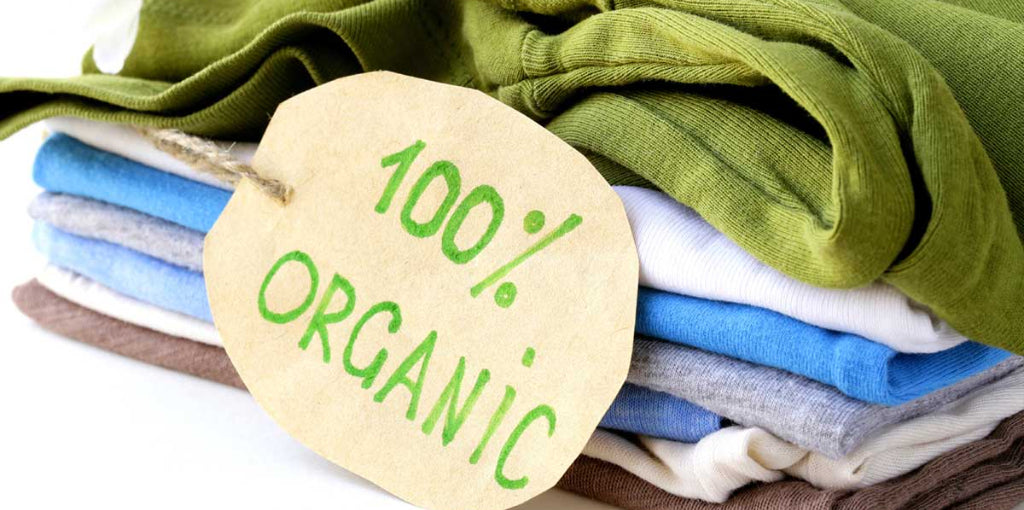
Discover Silk: An Unexpected Sustainable Fabric
Silk, often associated with luxury and elegance, might not immediately strike one as a sustainable fabric. However, upon closer examination, silk production boasts several eco-friendly characteristics that position it as a responsible choice for environmentally conscious consumers.
- Silk is biodegradable and renewable.
- Mulberry Trees: Sustainable Silk's Root
Moreover, the cultivation of silk involves the use of mulberry trees, which are the primary food source for silkworms. Mulberry trees are fast-growing and require minimal pesticides and fertilizers, contributing to a more sustainable agricultural practice compared to other crops.
Additionally, silk production generally involves fewer chemical treatments and energy consumption compared to the manufacturing processes of synthetic fabrics, further reducing its environmental footprint.
- Cultural Preservation and Community Impact
Beyond its ecological benefits, the traditional skills and techniques employed in silk production hold significant cultural value and can positively impact local communities. Silk weaving and sericulture (the rearing of silkworms) have been passed down through generations in many cultures, preserving age-old traditions and supporting livelihoods in rural areas.
By investing in sustainable silk, consumers can contribute to the preservation of these artisanal crafts and support sustainable development in silk-producing regions.
- Choose The Right Silk Brand
Brands like SILKSILKY exemplify the innovative potential of sustainable silk. Through their commitment to ethical sourcing and production practices, they offer a range of stylish and affordable garments made from pure mulberry silk.
By prioritizing transparency and sustainability in their supply chain, these brands ensure that consumers can make informed choices about the environmental and social impact of their purchases.
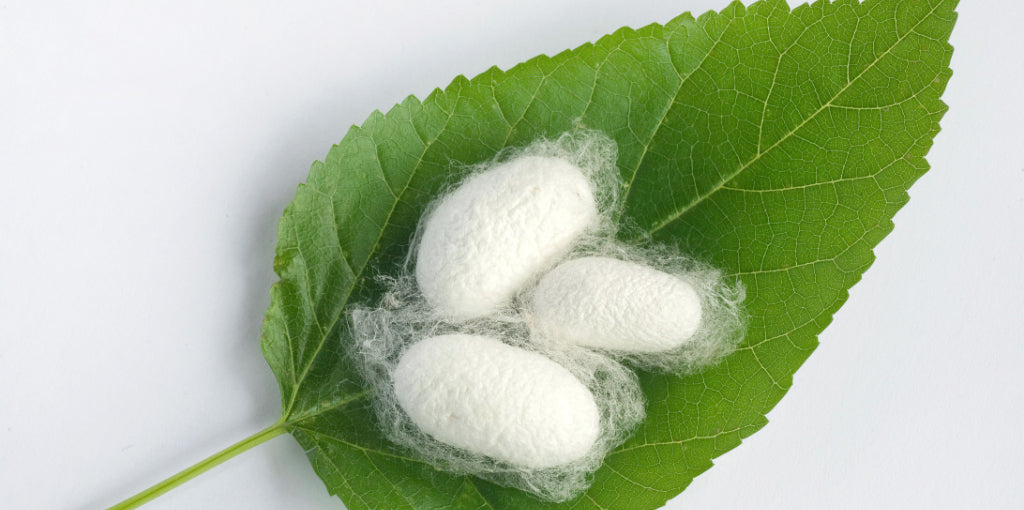
In summary, silk's biodegradability, renewability, and cultural significance make it an unexpected yet compelling choice for sustainable fashion. By supporting brands that prioritize sustainable silk production, consumers can make a positive impact on both the environment and local communities while enjoying the beauty and luxury of this timeless fabric.
The Benefits of Silk Beyond Sustainability
Silk offers a multitude of advantages beyond its sustainability, making it a versatile and luxurious choice in various aspects of life.
Silk Pajamas for Skin Health
- Silk sleepwear is renowned for its gentle and smooth texture, which is beneficial for sensitive skin.
- The natural properties of silk help to retain moisture and prevent skin dehydration, promoting a healthy complexion.
- Its hypoallergenic properties make silk an excellent choice for individuals with sensitive skin or skin conditions like eczema.
Silk Pillowcases for Hair Care
- Silk pillowcases reduce friction between the hair and the pillow, minimizing hair breakage and split ends.
- The smooth surface of silk helps to maintain the natural oils in the hair, preventing dryness and frizz.
- Using silk pillowcases can result in smoother and shinier hair, promoting overall hair health and vitality.
Silk Bedding for Better Sleep
- Sleeping on silk sheets and silk pillowcases provides a luxurious and comfortable experience.
- Silk's soft and breathable nature helps to regulate body temperature, keeping you cool in the summer and warm in the winter.
- The smooth texture of silk bedding reduces discomfort and irritation, promoting deeper and more restful sleep.
Other Benefits of Silk
- Silk's natural protein fibers are gentle on the skin, making it an ideal choice for individuals with allergies or sensitive skin conditions.
- Silk's moisture-wicking properties help to keep the body dry and comfortable, making it suitable for all seasons.
- Silk's durability and longevity ensure that it remains a worthwhile investment, providing long-lasting comfort and luxury.
The benefits of silk extend far beyond its sustainability, making it a versatile and desirable choice for various aspects of life, from skincare to sleep quality. By incorporating silk into daily routines, individuals can enjoy its luxurious feel and reap the many benefits it offers for skin, hair, and overall well-being.
Conclusion
Sustainable fashion is not just a trend - it's a movement towards a more conscious and responsible approach to style. By embracing sustainable fashion, we can contribute to a healthier planet, more equitable societies, and a brighter future for generations to come.
So why not join the sustainable fashion movement today and make a positive impact with every outfit you wear?




